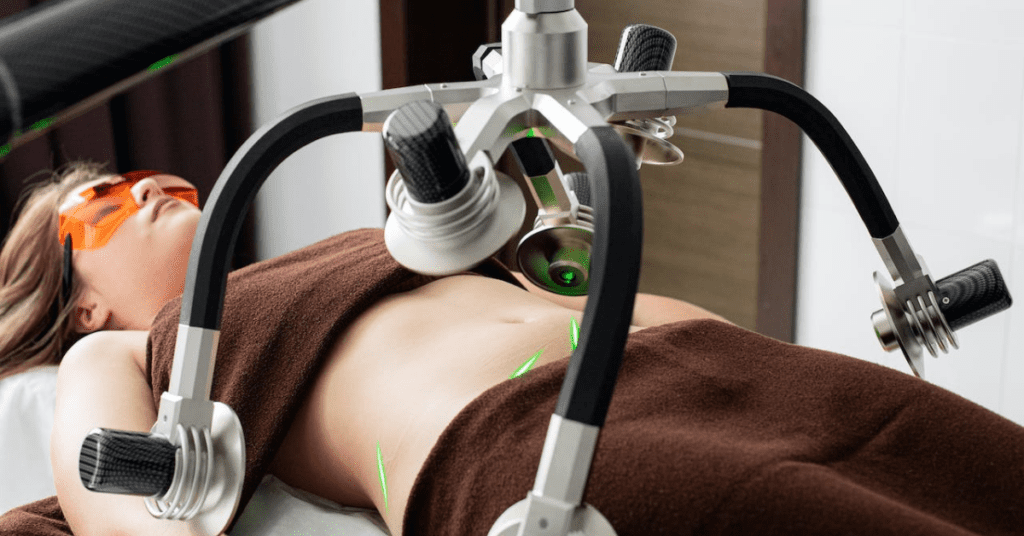According to scientific research, approximately the majority of women experience varying degrees of pain during menstruation, and about 25% of them show a negative impact on their quality of life during this period.
Unbalanced nutrition and behaviors such as vomiting after meals can lead to menstrual irregularities and metabolic disorders. Extreme dieting is a misguided behavior commonly observed in young women striving to appear beautiful and attractive. Excessive exercise and dieting can lead to menstrual irregularities, while regular and moderate exercise does not. Regular exercise, when done at regular intervals and without excess, does not cause menstrual irregularities.
In overweight young girls, menstrual irregularities, hair growth problems on the forehead, cheeks, between the breasts, and chin area may be observed. In such cases, it is checked whether polycystic ovary syndrome is present. The goal is to establish menstrual regularity in young ages through diet and exercise, and when necessary, to provide assistance with medications.
What is the general period of first menstruation during adolescence?
Menstrual bleeding usually begins between the ages of 9 and 16. Girls engaged in sports or those who are very thin and lose weight during the developmental stages may experience delayed menarche.
If menstruation has not started by the age of fifteen, a visit to a physician for examination is necessary. The physician examines the genital organs. In some girls, there may be no opening in the membrane normally found at the entrance of the vagina, which allows menstrual blood to flow out. In very rare cases, the vagina or uterus may not have developed.

Menstrual bleeding occurs once a month. Menstrual cycles lasting between 25-30 days are considered normal. Menstrual bleeding lasts for 3-7 days, with the bleeding being more pronounced in the first days and gradually decreasing. During the initial periods of menstruation, the bleeding may not be consistently the same in intensity every month. It is normal to experience irregular menstrual cycles in the first 1-2 years. After menarche, it takes time for the reproductive organs and hormones to function harmoniously.
Some girls may experience menstruation only 3-4 times a year. Stress, intense exercise, sudden weight loss, and dieting can lead to such prolonged menstrual cycles. Additionally, hormonal imbalances can contribute to this lengthening of the cycle. In cases where polycystic ovary syndrome is present, characterized by excess weight, excessive hair growth, and menstrual irregularities, menstruation may occur only 3-4 times a year.
How does stress and weight loss affect menstrual regularity?
Stress, illness, or weight loss may cause a person to skip menstruation for several months. If there is no menstrual bleeding for a few months, a visit to the doctor is recommended.
During menstruation, the most commonly used products are pads, which are placed in underwear and have high absorbency. Tampons are another option. Tampons are not widely used but there are types designed for young girls that do not harm the membrane at the entrance of the vagina. Individuals with an active sex life find tampons more comfortable. When using tampons, it is important to note that they can cause Toxic Shock Syndrome, a significant health issue. Individuals using tampons must change them every 4-6 hours.
Some individuals experience delayed menstruation. If a young girl has not started menstruating before the age of 9 or after the age of 16, it could be a concern. These individuals should see a gynecologist. About 85% of women with regular menstruation can be considered to have regular egg development. In couples seeking to conceive, approximately 15% have ovulation defects. If a woman who has not menstruated once a month for a long time has a low probability of getting pregnant, it is necessary to regulate the menstrual cycles and support egg development with medications.
Sometimes abnormal vaginal bleeding can occur. How is this understood, and what should be done?
Menstrual cycles lasting less than 21 days or longer than 35 days are considered abnormal. Excessive menstrual bleeding, prolonged bleeding, or spotting and bleeding between two periods may be due to hormonal changes, ovarian cysts, polyps in the uterus or cervix, fibroids, endometrial hyperplasia, and uterine cancer.
Irregular bleeding can occur within the first two years after menarche (first menstruation). The most common cause of irregular bleeding in young girls is ovulation (egg release) disorders.
Disorders in the thyroid gland, elevated levels of prolactin hormone (involved in milk production), kidney diseases, sudden and excessive weight loss, stress, and blood disorders can cause abnormal bleeding.
Sleeping pills, sedatives, and antidepressants (medications used in depression treatment) can cause frequent and irregular bleeding by affecting menstrual cycles.
Intrauterine devices increase the duration and amount of menstrual bleeding. In some women, they can also cause spotting between periods. Polyps formed in the uterus and cervix can become fragile and lead to vaginal bleeding. Endometrial hyperplasia is the excessive growth of endometrial cells lining the uterus. Excessive menstrual bleeding and prolonged bleeding, along with frequent spotting, are the main symptoms of endometrial hyperplasia.
Diagnosis is made through the pathological examination of samples taken from the uterus by endometrial biopsy. This examination can also diagnose uterine cancer and endometrial polyps.
Young women with abnormal bleeding are advised to take birth control pills containing both estrogen and progesterone for a few months. In menopausal or peri-menopausal women, progestins are used, and if this treatment is not successful, hysterectomy is performed.
Abnormal vaginal bleeding and spotting are the main signs of uterine cancer. Since uterine cancer causes these symptoms from the early stages, early diagnosis and treatment are possible.
After the pathological examination of cells taken by endometrial biopsy, uterine cancer diagnosis is made. For women with excessive bleeding, menopausal women, or those with persistent abnormal bleeding and enlarged uterus, examining cells taken through dilation and curettage is more appropriate. More cells can be taken and examined with this method.
The chance of recovery for uterine cancer diagnosed in the early stages is 95%. It is advisable to remove the ovaries and tubes during hysterectomy. Sometimes, after hysterectomy, radiotherapy (radiation therapy) may be recommended. Radiotherapy aims to kill any remaining cancer cells in the body, preventing the recurrence of cancer.
Abdominal hysterectomy is the preferred method in the treatment of uterine cancer. During abdominal hysterectomy, the surgeon evaluates the reproductive organs and plans the treatment.


